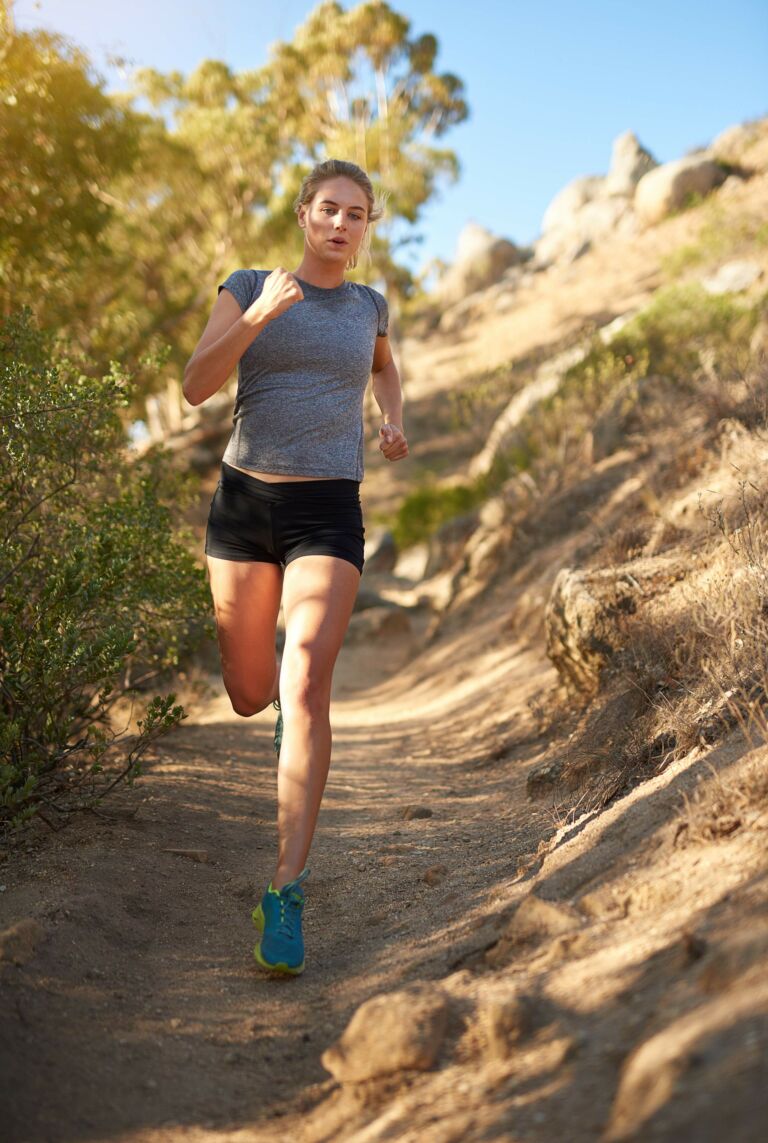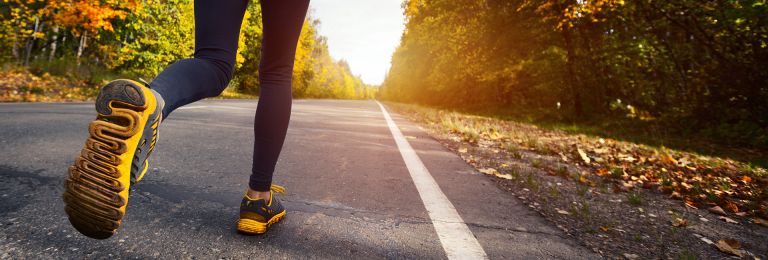Before you lace up your shoes and hit the trails this summer, it is essential to ensure that your footwear is up to the task. Trail running places unique demands on your toes, feet and ankles. Shoes that provide support, stability, and protection can help protect you from injury and help you get the most out of your adventures. In this blog, we’ll explore the factors to consider when choosing the best shoes for trail running, from foot shape and stride to trail type and length of run.
4 Factors in Shoe Selection
Foot Shape and Size
Just as no two trails are alike, neither are any two pairs of feet. Understanding your foot shape and size is crucial when selecting trail running shoes. Some people have high arches, others flat feet, and some fall somewhere in between. The key is to find shoes that accommodate the unique contours of your feet and provide the necessary support while also cushioning areas that need it.
For those with high arches, look for shoes with ample cushioning to help absorb impact and reduce strain on joints higher up in the leg (eg. knee and hip). Conversely, if you have flat feet, opt for shoes with good stability features, including solid arch support and motion control to prevent overpronation and promote proper ankle, knee, and hip alignment.
As you’re shopping, consider the level of arch support and pronation control offered by various shoes. Runners with high arches may benefit from shoes with a focus on cushioning as they do not need additional arch support to help distribute weight more evenly and reduce strain on the plantar fascia.
Likewise, if you overpronate it may be helpful to look for shoes with features such as medial posting or a supportive midsole to promote proper alignment and prevent excessive inward or outward rolling of the foot.
Stride and Gait Analysis
Your running stride and gait also play a significant role in optimal shoe selection. Are you a heel striker, forefoot striker or midfoot striker? Do you overpronate, underpronate, or have a neutral gait? Understanding your biomechanics can help you choose shoes that address any inefficiencies or imbalances in your running form.

Consider visiting a physical therapist or specialty running store for a gait analysis. They can assess your stride and recommend shoes that provide the right amount of support and cushioning based on your individual needs.
Trail Type and Terrain
Trail running encompasses a wide range of terrain, from smooth, groomed paths to rugged, rocky trails. The type of terrain you’ll be tackling should influence your shoe choice.

For example, if you primarily run on technical trails with steep inclines and uneven surfaces, you’ll want shoes with aggressive lugs and rock plates for added traction and protection.
On the other hand, if you stick to more moderate trails with gentler slopes and smoother surfaces, you can opt for lighter, more flexible shoes that prioritize responsiveness and agility.
Finding the right balance between stability and flexibility is key to a successful trail running shoe. Too much stability can feel clunky and restrictive, while too much flexibility may not provide enough support on rough terrain.
The ideal shoes will have a supportive midsole and a secure fit around the heel and midfoot for stability, combined with a flexible forefoot to allow for natural foot movement and agility.
Length of Run
The length of your runs also factors into shoe selection. For shorter, faster runs, you may prefer lighter, more minimalist shoes that allow for greater speed and agility. However, for longer, endurance runs, you’ll want shoes with ample cushioning and support to help ward off fatigue and prevent injury.
Once you have selected your running shoes and taken to the trails, it is essential to pay attention to how they feel on your feet. Even if you considered all of the 4 factors outlined above in your shoe selection, a poor fit can lead to a miserable experience. Signs of poor shoe fit include blisters, hot spots, numbness, or pain. If you experience any discomfort in your feet or ankles while running, it’s a red flag that something might not be right with your shoes. Other physical factors such as poor ankle flexibility and/or foot strength could also play a role and would be another reason to visit a physical therapist if you ever have pain with running.

Choosing the best shoes for trail running is a highly personal process that depends on a variety of factors, including foot shape, stride, trail type, length of run, and individual preferences. By taking the time to assess your needs and try out different shoes, you can find the perfect pair that will keep you comfortable, supported, and ready to tackle any trail.
4 Shopping Tips
- Try Them on Later in the Day: Your feet will typically expand when running. To mimic this, get fit and purchase your shoes in the late afternoon when your feet are the largest. Also, bring the socks you will be wearing when you run.
- Measure Both Your Feet: Slight variance in foot sizes is more common than you may think, so measure and try shoes on both feet. And do not assume sizes are the same from brand to brand.
- Use the Thumb Test: Check the fit of your shoe by making sure your thumb fits between your longest toe and the end of your shoe. Widthwise, your foot should feel snug – not too tight – without sliding from side to side.
- Take Your Time: Take them for a spin up and down the block, or try them out on a treadmill, if there is one in the store. Wear the shoes for at least 10 minutes to ensure there is no discomfort.
Check out these additional resources to kick off your running season right this year!

Spring Into Running: Strategies for an Injury-Free Season
If you have had a break from running due to the cold winter or injury there are essential steps to prepare your body to minimize injury risk and enjoy a pain-free running season.

Top Tricks for Trail Running
As the heat of summer fades into memory, trails throughout the Pacific Northwest call out to runners of all ages and abilities. In addition to the positive mood-boosting effects of running on the trails, trading roads for trails can also boost your physical fitness and strength no matter what level of runner you are.

Starting a Running Program
Running could just be the perfect exercise. it doesn’t require a membership, you don’t need to take a class or hire a trainer, it gets you outside, and the only equipment you need is a pair of running shoes.
Are you ready for spring running?

If you’re ready to hit the beautiful trails throughout the Pacific Northwest, be sure to approach the running season slowly. If you have any questions about how to avoid running injuries while increasing your performance, whether you’re aiming for longer distance or faster speeds, we can help. Our passion is to help everyone reach their goals.

